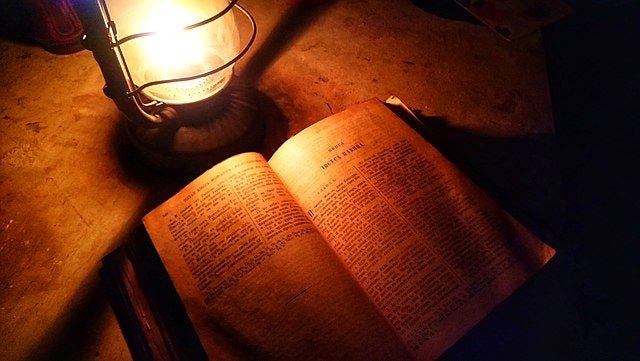Welcome to the Daily Bible Chapter. My name is James Leroy Wilson and I invite you to join me as we discover new insights and new perspectives from a very old book.
Exodus 25
I'm reading Young's Literal Translation (YLT) and the New Revised Standard Version (NRSV).
Like Noah, Moses is also asked to build an "ark," this time to house a covenant in the form of a written agreement.
If you're like me, you rarely encounter the word "ark" without Moses or Noah being mentioned. The dictionary seems to bear this out:
ark noun
1 a: a boat or ship held to resemble that in which Noah and his family were preserved from the Flood b: something that affords protection and safety
2 a: the sacred chest representing to the Hebrews the presence of God among them b: a repository traditionally in or against the wall of a synagogue for the scrolls of the Torah
The commonality of the two arks seems to be affording "protection and safety." Noah's ark was huge and filled with physical life, and after the flood the LORD made a seemingly verbal covenant with him. Moses's ark, though ornate, was quite small. Translated measurements suggest 2.25 feet x 2.25 feet x 3.75 feet. It was to contain a written covenant, not physical life.
It's as if "protection and safety" will now come from words, that is, from the mind. The LORD seems to be, once again, changing the rules or re-setting the game. There was the reset after the expulsion from Eden, the reset after the flood, and the reset after Babel.
I won't mention the details about the Ark of the Covenant save for the cherubim made of gold above it. The cherubim were previously mentioned in Genesis 3:24, where they were placed to the east of Eden to guard the tree of life.
A cherub is " a celestial winged being with human, animal, or birdlike characteristics who functions as a throne bearer of the Deity." They are positioned over the cover of the ark, which will be where the LORD will deliver his commands. In other words, the cover would serve as a throne. The small golden cherub statues are representations with no power in and of themselves.
It's as if the people are being conditioned to start thinking and acting based on words and symbols, and no longer in reaction to external objects and entities.
(These thoughts are my personal echo The Origin of Consciousness and the Breakdown of the Bicameral Mind by Julian Jaynes, which I just recently read at the time of this writing.)
Exodus 25 also provides instructions for the building of a table, apparently for offerings. The "bread of the Presence" doesn't seem to allude to any previous ritual mentioned in the Bible, though perhaps to Passover. Maybe it will be explained later.
As for the remainder of the Chapter 25, about a lampstand, Chapter 26 about the tabernacle (a tent meeting place for worship), and Chapter 27 about the altar and court, I have little to say. There is exquisite detail, much like a novelist goes into detail about the setting for the characters. The reader can imagine what the novelist has imagined.
Maybe there are esoteric meanings to the colors, objects, and numbers mentioned. Taken as a metaphor, maybe the exterior beauty is to be a reflection of the beauty inside of you.
The end of Chapter 27 mentions a lamp which the priests are to keep continuously lit overnight. The night, the darkness, doesn't mean death.
Keep your light shining.
James Leroy Wilson writes Daily Miracles, The Daily Bible Chapter, JL Cells, and The MVP Chase. Thanks for your subscriptions and support!
(Photo credit: TyshkunVictor)





No comments:
Post a Comment